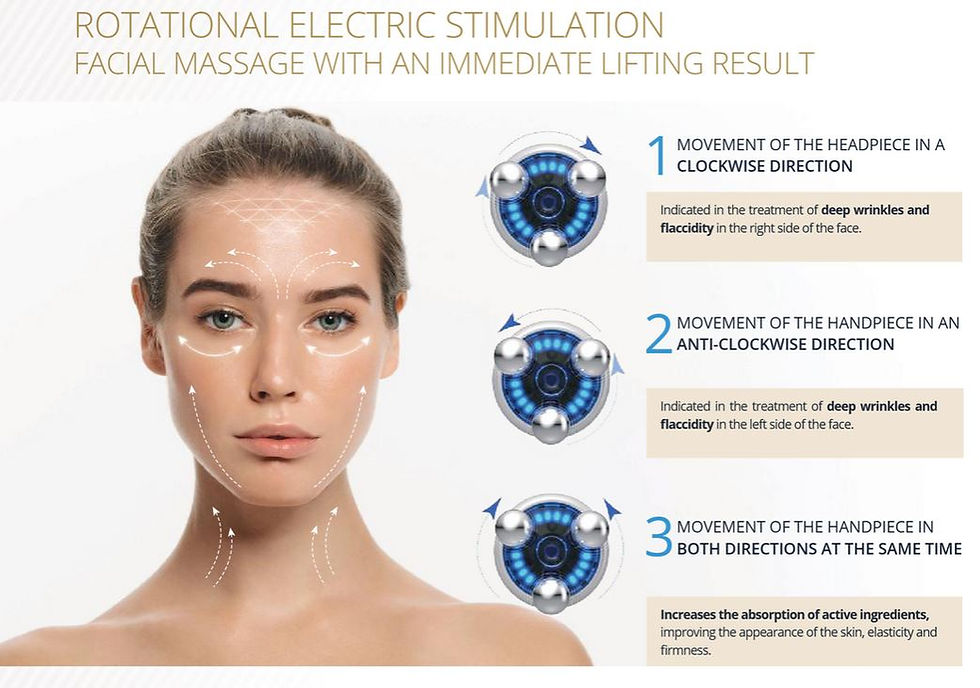The Myth of Microneedling: Does a Deeper Needle Mean Better Results for Pigmentation?
- Sep 5
- 2 min read
Understanding Microneedling and Pigmentation
Microneedling works by creating controlled micro-injuries to the skin, stimulating collagen production and enhancing the penetration of topical treatments. For hyperpigmentation—especially melasma, post-inflammatory hyperpigmentation (PIH), and sunspots—the goal is to:
Regulate melanocyte activity (melanin-producing cells)
Increase cell turnover
Improve the delivery of pigment-reducing actives (like tranexamic acid, vitamin C, etc.)
But here’s the catch: not all pigmentation lies deep in the skin. Many forms, especially epidermal pigmentation, reside in the upper layers of the skin (epidermis)—meaning deeper needle penetration isn’t always necessary, and may actually be counterproductive.
Superficial (0.25–0.5 mm): Improves product absorption, brightens skin tone, and helps with mild pigmentation.
Medium (0.5–1.0 mm): Targets early fine lines, acne scars, and moderate pigmentation.
Deep (1.5–2.5 mm): Typically reserved for deeper acne scars, stretch marks, or significant textural issues—not pigmentation

Why Deeper Isn’t Better for Pigmentation
Hyperpigmentation, melasma, and post-inflammatory pigmentation are conditions primarily rooted in the epidermis (the upper layer of skin) or at the junction between the epidermis and dermis. Using unnecessarily deep needles can:
Irritate melanocytes (pigment cells): Aggressive injury may worsen pigmentation instead of improving it.
Trigger post-inflammatory hyperpigmentation (PIH): Especially in darker skin types, deeper injury increases the risk of rebound pigmentation.
Cause unnecessary pain and downtime: Going deeper than required only increases trauma without added benefit.

The Science-Backed Approach
Studies show that superficial to medium microneedling depths (0.25–1.0 mm) are most effective for treating pigmentation. At these levels, the treatment:
Improves the penetration of topical brightening agents like vitamin C, tranexamic acid, or glutathione.
Stimulates gentle skin renewal without triggering excess inflammation.
Provides visible results with lower risk of complications.
Key Takeaways
Deeper is not always better. For pigmentation, shallower microneedling is often safer and more effective.
Customized treatment is essential. The right depth should depend on the concern being treated, skin type, and professional assessment.
Combination therapy works best. Pairing microneedling with topical serums, chemical peels, or laser treatments often enhances results for pigmentation.
Final Thoughts: Precision Over Depth
The belief that “deeper is better” in microneedling stems from a misunderstanding of skin anatomy and pigmentation pathology. While deeper needling has its place (think acne scars or skin laxity), when it comes to hyperpigmentation, especially in sensitive or melasma-prone skin, less is often more.
Microneedling is a nuanced art—and when done with precision, rather than aggression, it can be a powerful ally in the battle against unwanted pigment.
What the Research Says
A 2018 study in the Journal of Cosmetic Dermatology found that 0.5 mm microneedling with topical tranexamic acid significantly improved melasma, with minimal risk of adverse effects.
A 2021 review concluded that deeper isn’t better for pigmentation, especially in skin of color, and that needle depth should be customized to the specific concern—not used as a one-size-fits-all metric.









Comments